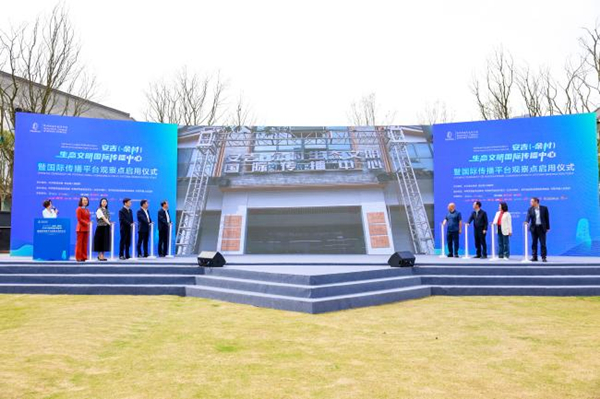Village reaps dividends from agricultural heritage

Mulberry fish ponds in Digang village, Huzhou, East China's Zhejiang province. [Photo/hz66.com]
Digang village in Huzhou has risen as a hit tourism destination in recent years by leveraging its agricultural heritage system.
Located in Hefu town, Nanxun district, the village is renowned for its mulberry fish ponds, a special dike-pond model that integrates fish ponds with the breeding of mulberry silkworms. The model was listed as a Globally Important Agricultural Heritage System by the Food and Agriculture Organization of the United Nations in 2017.
A large number of tourism facilities themed on the agricultural heritage have in recent years been set up in Digang to attract tourists. For example, a 200-mu (13.33 hectares) facility designed to allow visitors to learn about the heritage is currently under construction in the village and will be opened to visitors this October.
In addition, homestays, restaurants and agritainment complexes have been established to entertain visitors.
In 2021, Digang welcomed about 800,000 tourists, generating more than 100 million yuan ($15.38 million) from tourism and the sales of local specialties. The thriving tourism has created jobs for nearly 500 locals, official statistics show.
Apart from mulberry fish ponds, the village's ancient houses and pavilions along the river and delicacies including sweet-scented osmanthus rice cakes and wontons have also increased its appeal to visitors.

Visitors have fun in Digang village, Huzhou, East China's Zhejiang province. [Photo/hz66.com]

A light show is staged in Digang village, Huzhou, East China's Zhejiang province. [Photo/hz66.com]





